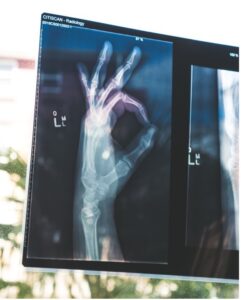If you’re waking up with tingling fingers, aching wrists, or shooting pains that make everyday tasks feel impossible, you’re not alone. Wrist and hand pain are some of the most common reasons people visit a hand surgeon — but it isn’t always carpal tunnel syndrome. Understanding what’s behind your pain is the first step toward lasting relief.
At Arora Hand Surgery, Dr. Avery Arora and our caring team in Southeast Michigan help patients pinpoint the true cause of their discomfort so they can get back to doing what they love, pain-free.
What is Carpal Tunnel Syndrome?
Carpal tunnel syndrome (CTS) is a condition that develops when the median nerve — which runs from your forearm into your palm — becomes compressed or squeezed at the wrist. This nerve passes through a narrow passageway called the carpal tunnel, which can become narrowed by swelling, repetitive use, or certain medical conditions.
Classic signs of carpal tunnel syndrome include:
- Numbness or tingling in the thumb, index, and middle fingers
- Pain that wakes you up at night
- Weak grip strength
- Difficulty holding objects or performing fine motor tasks
If this sounds familiar, you’re not alone. CTS is especially common in people whose work involves repetitive hand and wrist motions, such as typing, assembly line work, or certain sports.

But Wrist Pain Isn’t Always Carpal Tunnel…
While carpal tunnel is a well-known culprit, it’s not the only condition that can cause wrist and hand pain. Here are a few other common possibilities:
Wrist Tendonitis
Tendonitis occurs when the tendons that connect muscle to bone become inflamed. Overuse, repetitive motions, or sudden injuries can lead to swelling and pain in the wrist or forearm. De Quervain’s tenosynovitis, for example, is a type of tendonitis that affects the thumb side of your wrist and is often seen in new parents or people who lift babies frequently.
Signs of wrist tendonitis:
- Pain with movement or grasping
- Swelling along the wrist joint
- Tenderness over specific tendons
- Stiffness in the morning
Arthritis
Both osteoarthritis and rheumatoid arthritis can affect the wrist and fingers. Osteoarthritis is the wear-and-tear type, more common with age, while rheumatoid arthritis is an autoimmune condition that causes painful inflammation in the joints.
Signs of arthritis in the wrist or hand:
- Aching or burning pain, especially after use
- Joint stiffness and swelling
- Decreased range of motion
- Bony bumps or deformity in advanced cases
Nerve Compression Elsewhere
Sometimes, numbness or tingling in the wrist and hand can stem from a pinched nerve higher up in the arm or even in the neck. For example, cubital tunnel syndrome affects the ulnar nerve at the elbow and can cause symptoms similar to carpal tunnel syndrome but typically involves the ring and pinky fingers instead.
When Should You See a Hand Surgeon?
If you’re experiencing wrist, hand, or finger pain that doesn’t improve with rest, ice, or over-the-counter pain relief, it’s time to see a specialist. Early diagnosis can prevent long-term nerve damage or joint deterioration.
Dr. Avery Arora, a board-certified hand surgeon serving Southeast Michigan, will evaluate your symptoms, perform specialized tests, and recommend a treatment plan tailored to your needs. Many patients find relief through non-surgical options like splinting, physical therapy, or targeted injections. When surgery is necessary, our team uses the latest techniques to help you recover quickly and comfortably.
Take the First Step Toward Relief
Wrist and hand pain shouldn’t hold you back from work, hobbies, or a good night’s sleep. If you’re wondering whether your pain is carpal tunnel syndrome or something else, Dr. Arora and the team at Arora Hand Surgery are here to help.
Ready to find answers? Schedule your consultation today at one of our convenient Southeast Michigan locations today.


























